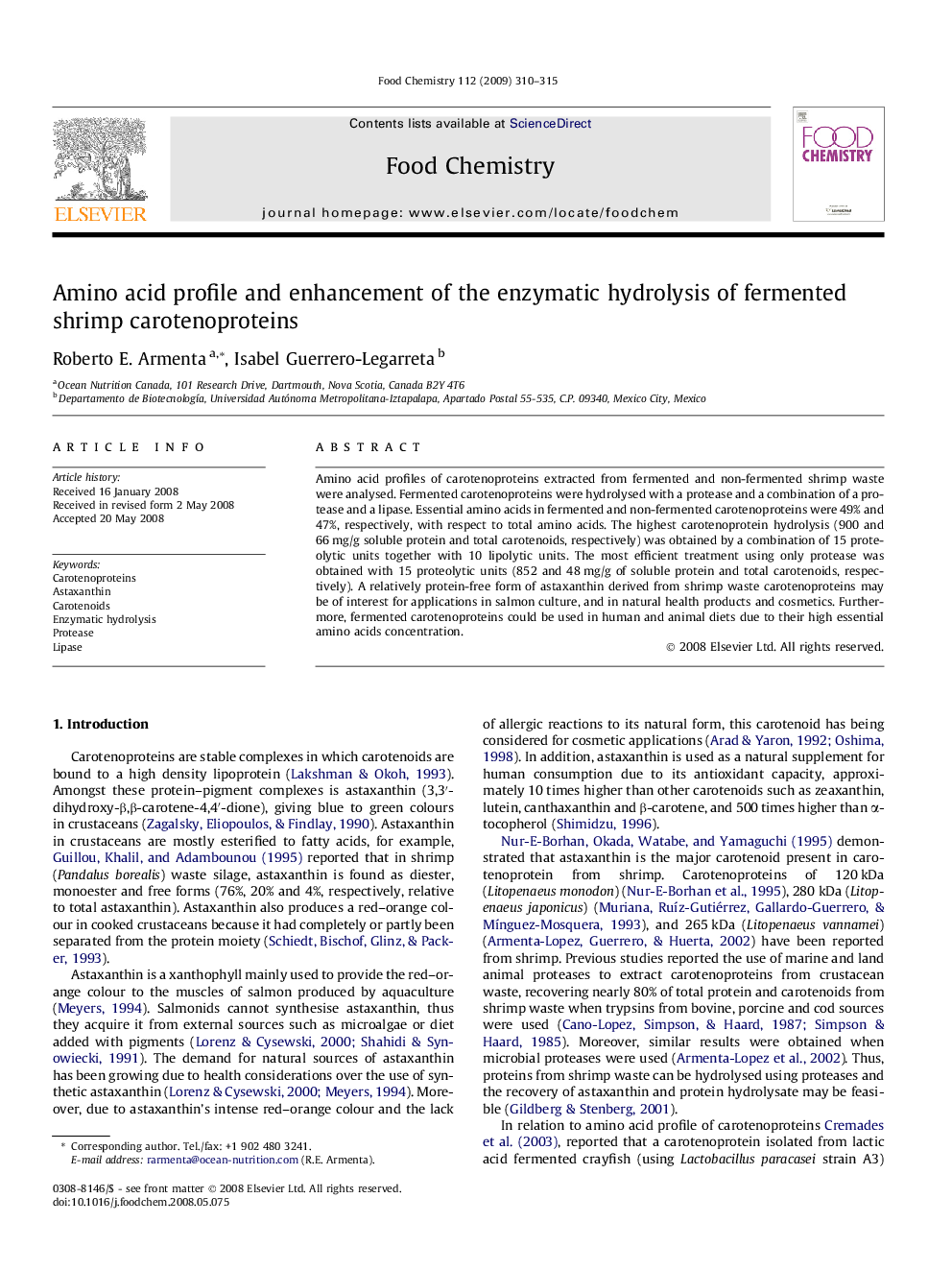| کد مقاله | کد نشریه | سال انتشار | مقاله انگلیسی | نسخه تمام متن |
|---|---|---|---|---|
| 1188064 | 963480 | 2009 | 6 صفحه PDF | دانلود رایگان |

Amino acid profiles of carotenoproteins extracted from fermented and non-fermented shrimp waste were analysed. Fermented carotenoproteins were hydrolysed with a protease and a combination of a protease and a lipase. Essential amino acids in fermented and non-fermented carotenoproteins were 49% and 47%, respectively, with respect to total amino acids. The highest carotenoprotein hydrolysis (900 and 66 mg/g soluble protein and total carotenoids, respectively) was obtained by a combination of 15 proteolytic units together with 10 lipolytic units. The most efficient treatment using only protease was obtained with 15 proteolytic units (852 and 48 mg/g of soluble protein and total carotenoids, respectively). A relatively protein-free form of astaxanthin derived from shrimp waste carotenoproteins may be of interest for applications in salmon culture, and in natural health products and cosmetics. Furthermore, fermented carotenoproteins could be used in human and animal diets due to their high essential amino acids concentration.
Journal: Food Chemistry - Volume 112, Issue 2, 15 January 2009, Pages 310–315